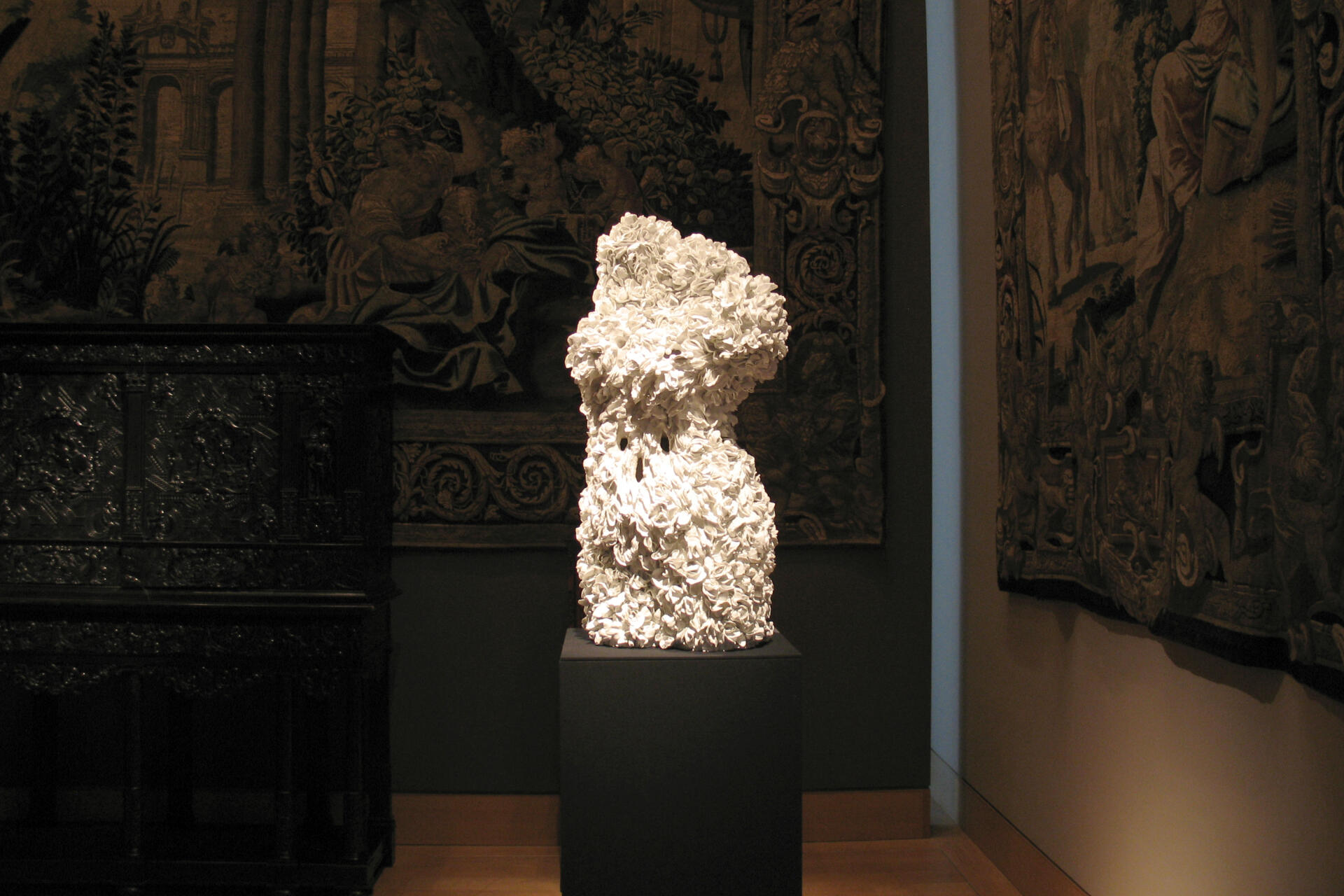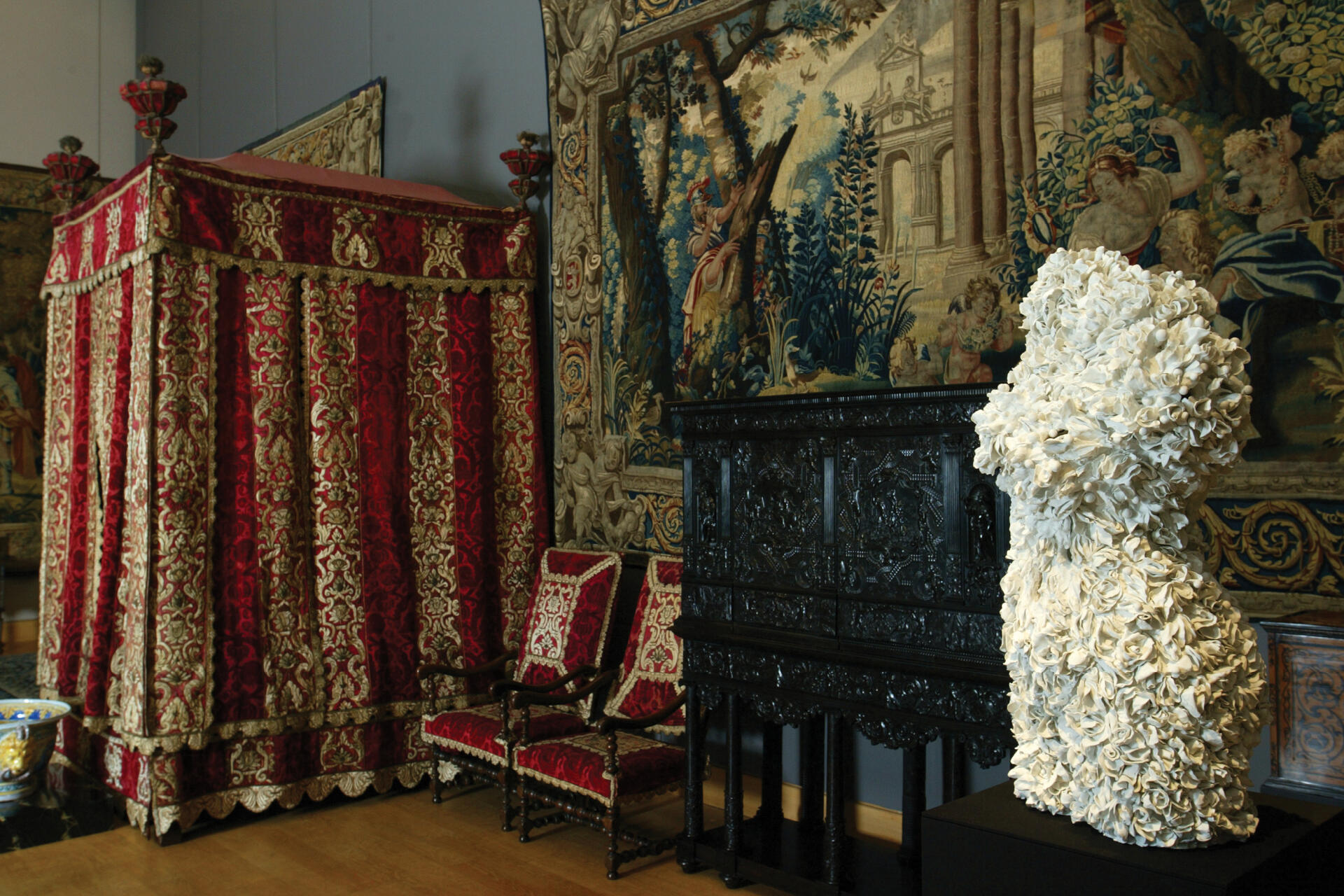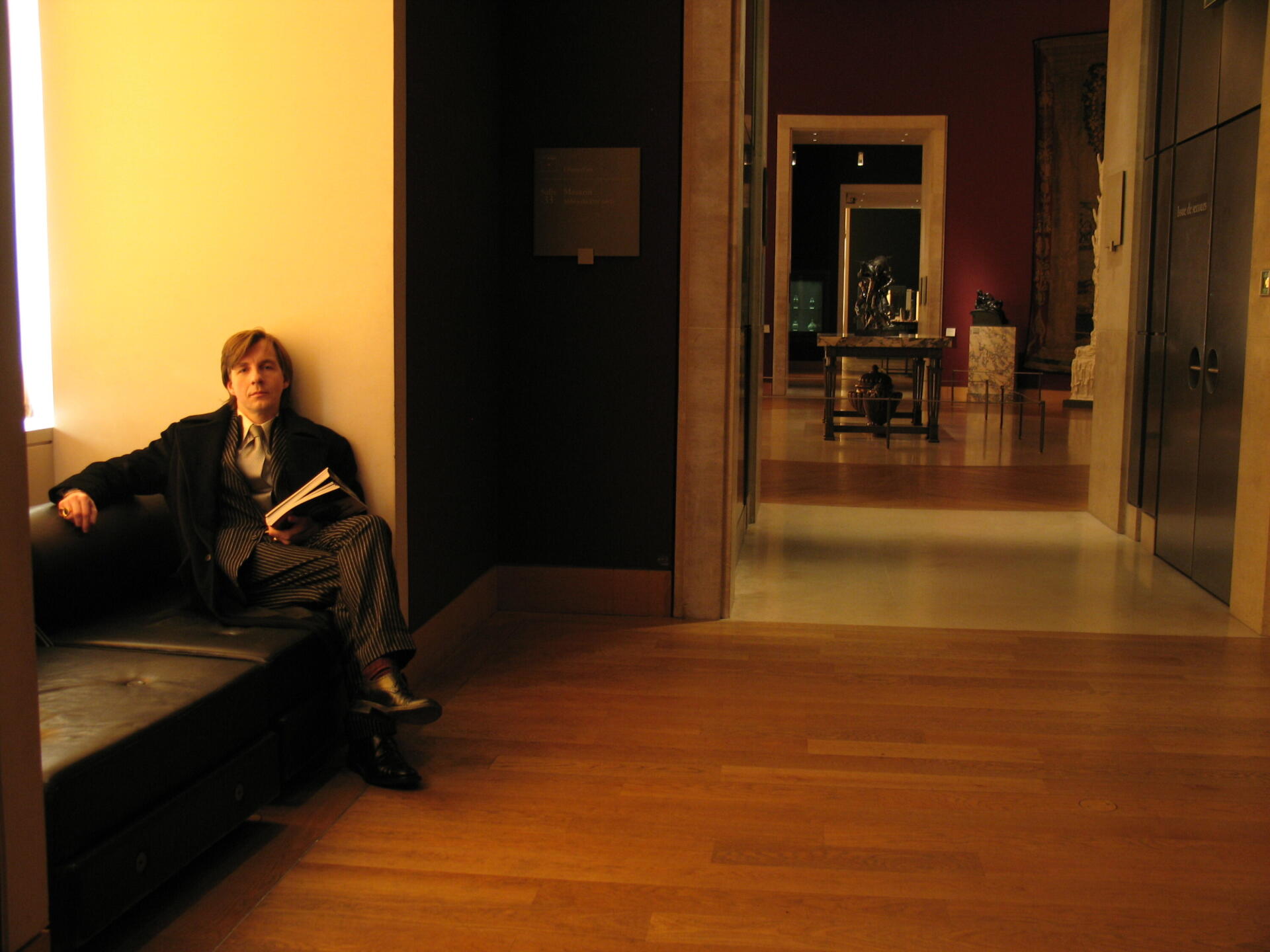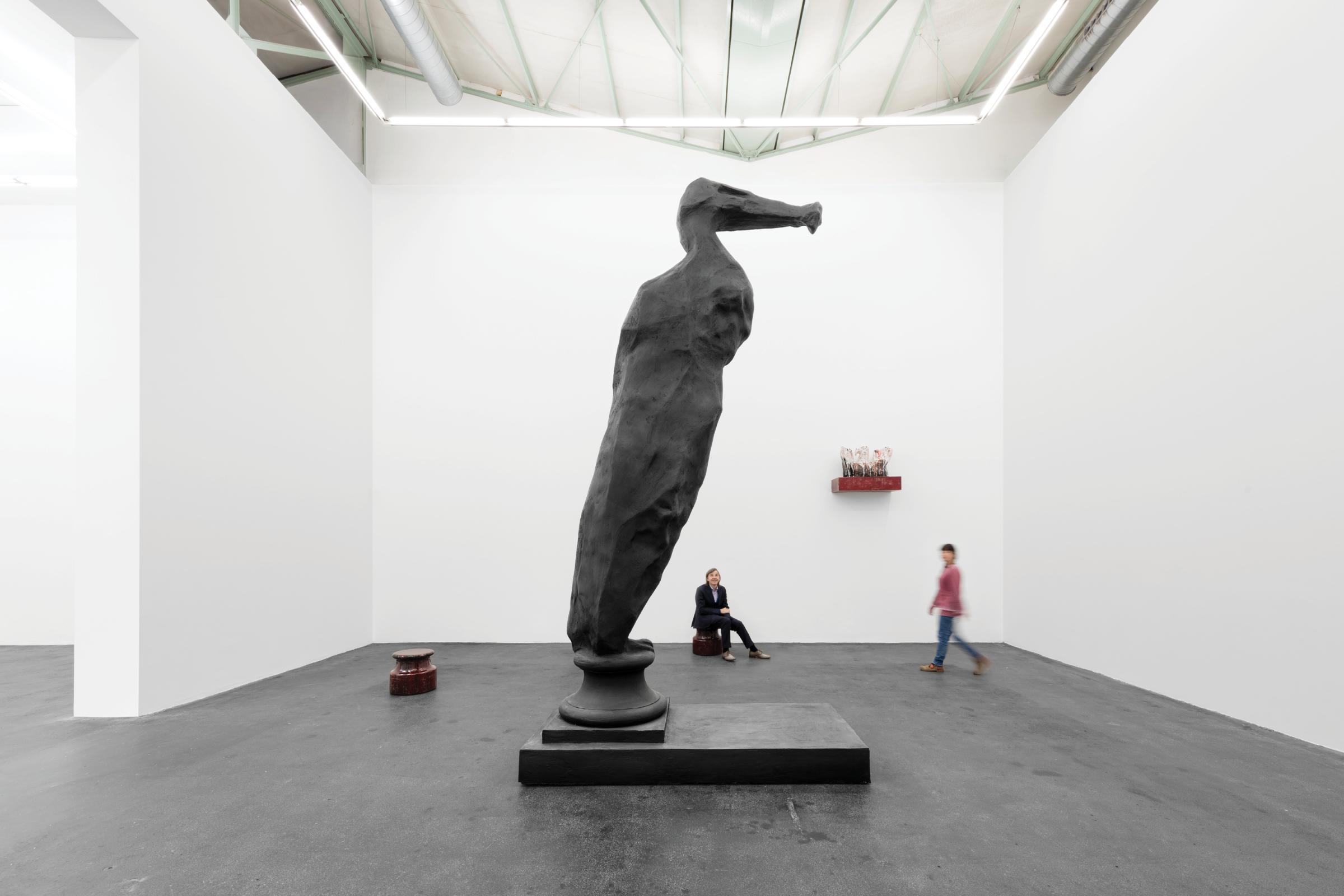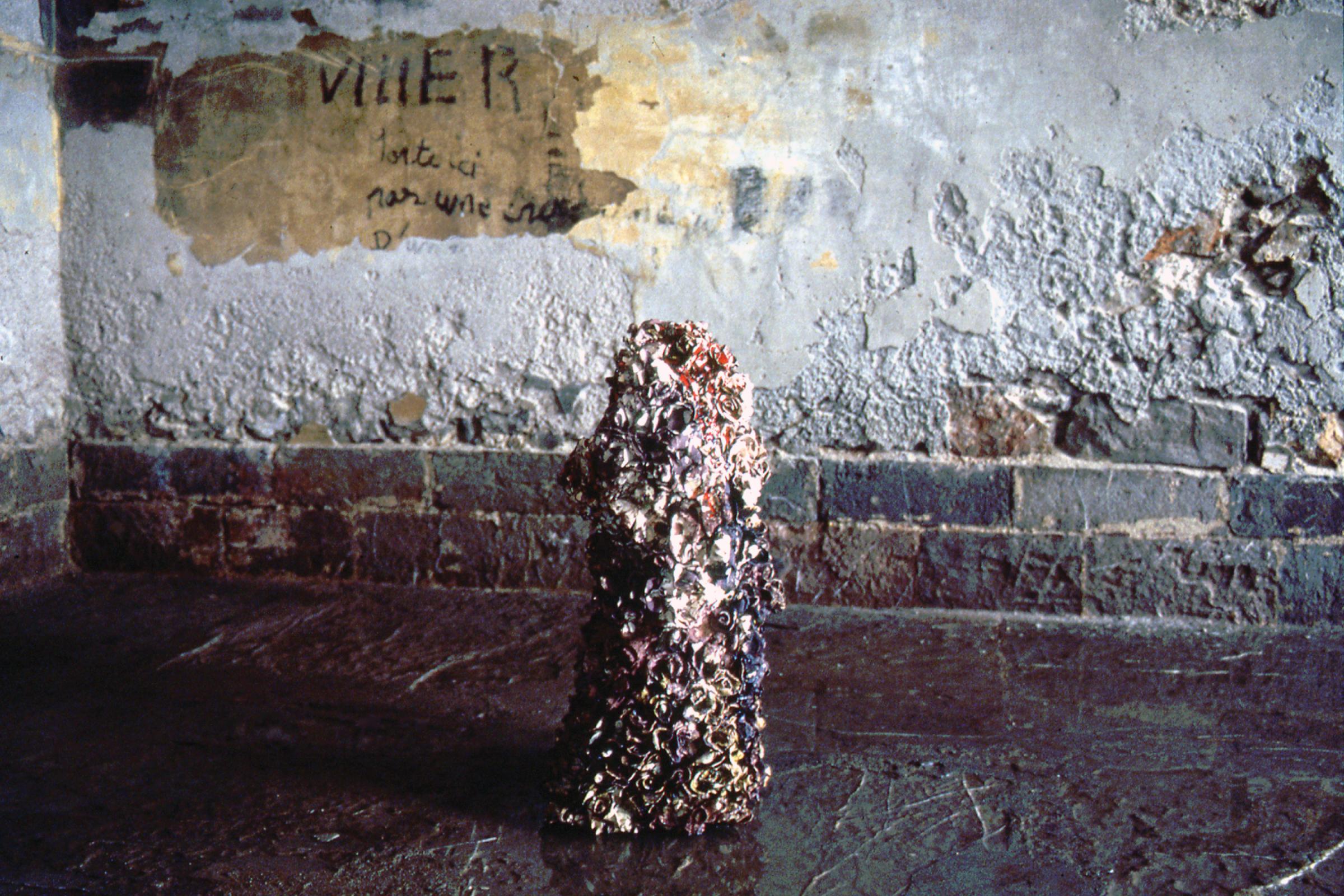
"Contrepoint" at the Louvre, 2005
Louvre
Paris
2005
“In 2005, Creten exhibited his work at the Louvre in Paris, as a participant in the Contrepoint 2 show devoted to contemporary porcelain. Work by various contemporary artists was shown ‘in a dialogue’ with works from the Louvre collection. Creten chose to put his sculptures in a room with the famous 16th-century ceramic work of a Bernard Palissy (1510-1589). He made two sculptures especially for this exhibition : Vague pour Palissy, 2004-2005 and La Très Grande Vague ou Une sirène pour Palissy, 2005.”
Doris Wintgens Hötte, “Johan Creten. Ars longa, vita brevis”, Johan Creten: beelden, cat. exp., Leiden, Stedelijk Museum de Lakenhal, 2007, page 55

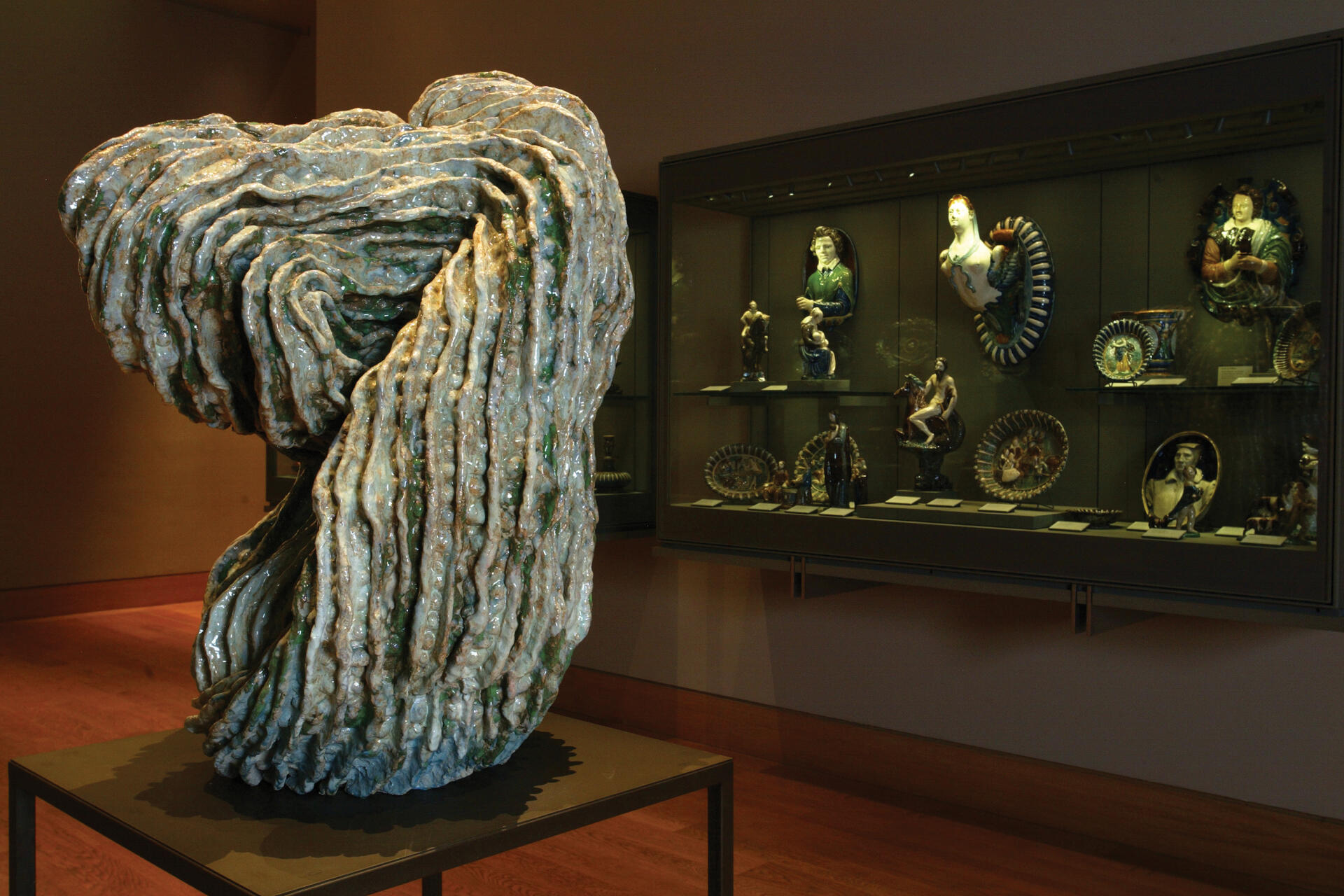
“As the symbolic source of all life on earth, the sea possesses a metaphysical power. To Creten, it is the mirror of both finiteness and infinity. French artist Gustave Courbet (1819–1877) immortalised the sea with broad brushstrokes and a palette knife, calling these paintings paysage de mer (sea landscape). Herein, too, lies an ambiguity. As the bringer of sediments, sand, and clay, the sea connects directly with Creten’s work. The previously mentioned Bernard Palissy focused on the dividing line between water and land. His decorations in relief on platters and trays were based on casts he made of real animals and plants, species inhabiting the area of transition between land, on the one hand, and fresh or seawater, on the other. Creten’s Grande Vague pour Palissy (25) shows us undefinable forms that could be either still flowing or just solidified.”
